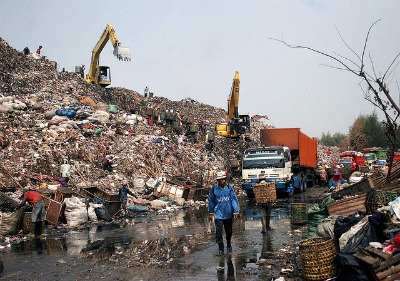By Adèle Charbonneau
Urban agglomeration is an inevitable consequence of explosive growth in cities. Indeed, the expansion of cities and their outskirts has created a situation where administrative boundaries are inadequate in regards to the geographic distribution of communities, resources, and infrastructure. Therefore, in terms of public policy, one can no longer think in isolated solutions, but in integrated and innovative actions between cities. This article presents four examples from developing cities where integration has been necessary both in terms of spatial planning and public policy, such as in Surabaya and Rio de Janeiro, but also for the development of infrastructure and basic services, such as in Jakarta and Bogotá.
In Indonesia, the development of Surabaya due to large-scale urbanization has been affecting nearby cities. Although physically, economically and socially integrated, these cities are administratively separated. Widya Anggraini writes about the situation of several of the outskirt cities, which do not even have proper city management, nor do they include economic and social developments in their spatial planning. Management of the larger area would thus gain from being integrated in order to respond jointly to transversal issues. Implementation should also be translated into sectorial plans, which consider the integration of outskirt cities with Surabaya. Indeed, differences in socio-economics and spatial dynamics between the areas would require a physical and non-physical approach to control the development of the region. A non-physical approach usually relates to issues such as availability of cross-sectorial policy; meanwhile, a physical approach is more related to infrastructure available, such as mass rapid transit (MRT), bus rapid transit (BRT) system, or other facilities that cross the city.
Similarly in Brazil, Andréa Azambuja also notices how large cities tend to bring together other urban centers, and Rio de Janeiro is no exception. That is where the work of Observatório das Metrópoles comes in, regrouping 159 researchers and 59 universities, government (state and municipal), and non-governmental organizations, under the overall coordination of IPPUR, Institute for Research and Urban Planning of Federal University of Rio de Janeiro. The group has been dedicated to researching the growth of Brazilian metropolises and their structural and productive adjustments. Observatório's work also extends to the formation of local leaders so that they can intervene directly in the administrative management of their cities. The great strength of Observatório das Metrópoles lies in its multidisciplinarity. Its research, based on the relentless monitoring of public policies, integrate several areas into a unified database. Cooperation is also a mark of its executive role, incorporating actors from diverse spheres and locations working for the same purpose: the pursuit of cities that are more just and democratic.
In Bogotá, Jorge Bela describes the difficulty associated with being under two separate administrations. For Soacha, a neighboring city of Bogotá such situation, has complicated the provision of basic services like transportation. Until the late 1970s, Soacha was an industrial suburb of Bogotá with 28,000 habitants. It has now over 500,000 inhabitants. As early as 2006, steps were taken to extend Bogota's then successful BRT, the Transmilenio, to Soacha. The project suffered massive delays, and did not enter into operation until December 2013. It now serves four stations in Soacha, all near the Autopista Sur. Yet, there is still no clear date for the feeding bus system to start its operations, despite the fact that over 75,000 passengers from Soacha use the Transmilenio every day. Currently, work is being done in expanding existing stations, to ease overcrowding, and adding a 3.8-kilometer expansion. Yet, these problems in Soacha illustrate the current necessity to think beyond the traditional city boundaries.
Such necessity is also valid for the city of Jakarta as explains it Widya Anggraini. City development in Greater Jakarta has had spillover effects on the outskirts, not only economically but also on issues such as waste. Since waste management is a common challenge, it should not be thought of only within the Jakarta area, but rather, in collaboration with neighboring cities. With that in mind, a joint cooperation has been established utilizing Bantar Gebang, a landfill in one of the neighboring cities, Bekasi, by building a temporary joint landfill (TPST) to reduce waste volume to be sent to Bantar Gebang. At the moment, TPST Cakung Cilincing has been operating and is able to manage 1,300 tons per day. Coordination between outskirt cities continues, while at the same time each city implements different waste management strategies. However, the main challenge for the management of waste often lies in the willingness of outskirt cities to use their land as dumpsites.
Check out more of the discussion on measuring the impact of urban development project on URB.im and contribute to the debate.
Photo credits: Aldrium Gyet and M Harun Alrasyid

